No Sun To Worship: Merlino Games Lets Players Become Hunters in New Stealth Title

Some people make games the way that George R.R. Martin writes books, at whatever pace suits them, with little concern about the timeliness of the release. On the other hand, some people make games like Stephen King writes, in a non-stop state of constant creativity where no time is wasted getting the next exciting book into the readers hands. I bring this up because one developer I have been watching over the past few years, Merlino Games, definitely seems to fall into the latter category. Starting with the release of his first title The Chameleon, in July 2021, and excluding No Sun To Worship which is set to release this year, Antonio Freyre has made and released four games online. With each game being different, sometimes drastically, both visually and mechanically, it is impressive to me that he is able to make games of such quality so quickly.
As of late Antonio has been abuzz about his latest project, No Sun To Worship. Showing various clips of the gameplay and discussing different aspects of the design. Wanting to learn more about this upcoming title, and also to learn about the development cycle of this person who seemingly never stopped working on games, I reached out to Antonio and requested an interview to discuss his work. Thankfully, Antonio is neither trapped in a secret facility or lost on a cursed island full of monsters, and was able to make time from his structured schedule to speak with me about his games, his work ethic, and how all of his artistic pursuits helped him develop his dream games.
After exchanging introductions and again thanking him for his time, I started the interview as I always do, by asking Antonio if he could tell us where he was from, and how he got into game development?
Antonio Freyre: I am from Guadalajara, Mexico. How long have I been making them? I think I started in 2020 or late 2019. But around the pandemic, basically. That’s why I started. I had a lot of free time, because I was working from home, so I decided to start. Before that I had been doing music and 3D art, like the different parts that make game development. I had been doing some of that for many years. And so I thought I could just put it all together. So I started making games.
On the topic of his various artistic pursuits, I had seen in my research that Antonio had shot an entire full length feature film, but never finished the project. With this in mind, I asked Antonio if he could tell us about the film and his interest in filmmaking?
AF: Yeah, mainly screenwriting. I was doing screenwriting, trying to learn, I wrote a few scripts, and since I love films, I also thought, maybe I could try and shoot one. It went well, in the sense that it’s well shot. But I think the script wasn’t very good. And also the other problem, I tried to do it on my own, as in I was the whole crew. So I did camera, sound, direction and everything. And that was too complicated. So once I started editing the movie, I felt like “oh, well, it looks pretty and it’s moody, but it’s not a good movie.” So I just stopped editing it. And that’s also part of what made me want to make games because with games I can be the whole crew. Like I can be a solo developer, but since you’re not on location, and you don’t have to do it live like you can do it little by little, part by part. That’s why it sounded appealing to me.
I commented that I could only assume that all of this experience with screenwriting and cinematography was beneficial to his work making games.
AF: Yeah, a lot. I think that’s because when I started my first game, programming was pretty janky. And the game design also was really simple. But I think it kept me motivated that people at least liked the screenshots or gifs that I was posting, because they had some sense of light, color, composition, all the other stuff that I had learned in filmmaking and design and all that. So that also helped me stay motivated because I felt like, “okay, I don’t have to learn everything from scratch. I have some sense of some parts of it.”
I could get behind that, initially it was his teasers for The Chameleon that led me to his work, as I’m sure was the case for many others.
AF: Yeah, I think that’s what led them to me. And also that the thing that helped me decide, okay, I should keep doing this more seriously.
I followed up by asking if The Chameleon was his first game project, or had he worked on other projects before?
AF: No, that was the first one. Like, it still has some like the very first code I wrote in there.
It was great to hear that his first project was so well received by the community. Speaking more about his career in game development, I wanted to talk about his willingness to work in different genres. I asked Antonio how he chose what games he would work on next?
AF: The interest just comes from different things I like, or just an idea that I have at the moment. So like, The Shotgun Game, I just thought, like, there’s this game Jurassic Park for the SNES. And I thought, maybe I can make something like that, but simpler. And then I was playing Doom, and I was like, “Well, what if it’s a shotgun?” and I just tested it in maybe like one or two days, I made a very simple prototype. And it seemed fun, so I decided to finish it. So yeah, choosing different genres is more because I like to play different genres. But I would say that stealth games are the things I know better, or the genre that I play the most. And so that’s why I’ve made three of them versus two others that are different.
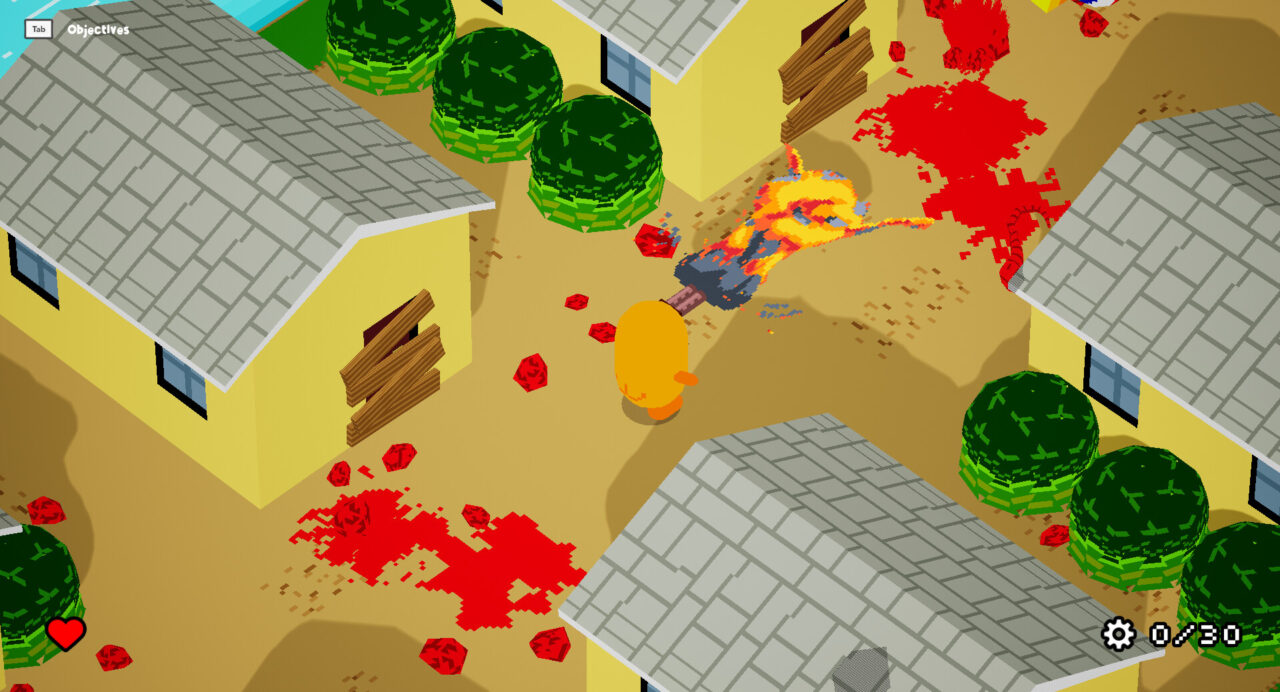
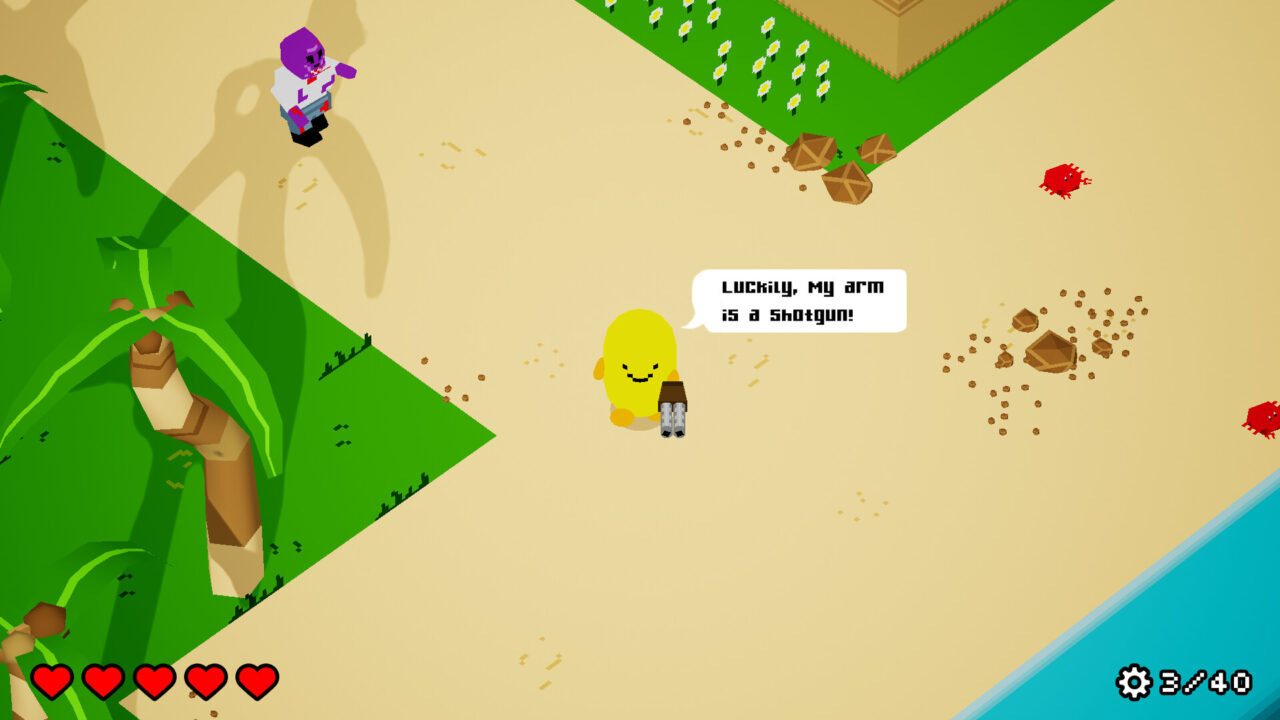
As a follow up I asked him what was the hardest genre to work in?
AF: Stealth is really hard. But the hardest game was Undetected, which is like, top down stealth. I had a hard time, let’s say, making it different enough from Metal Gear Solid, but also similar enough, like that balance between something that people will like, and will say, “oh, nostalgia, that’s great,” but also different enough that it’s unique, or that it’s iterating on older ideas. That was really hard, and I don’t think it was entirely successful. Now I have other ideas where I’m like, “Oh, I should have done this instead of that.” And, you know, in hindsight, I have different opinions of what I should have done.
But yes, stealth in general is really hard. It’s a strange genre where you’re telling the player “Don’t interact with the level or with the enemies, just hide,” but at the same time, that has to be fun. And also, you know, failing has to be fun, and not failing has to be fun. It’s very nuanced and very hard, but I’m still super into it, so I keep trying. So what I learned in one game, like what I learned on The Chameleon, I applied to Undetected, what I learned on Undetected, I did a prototype that was Undetected 2 that a few people played, and what I learned from that I am applying to this new game that I’m making. And so I’m kind of obsessed with just like, nailing the stealthing
Commenting on something I had seen on Antonio’s twitter, he had posited a question to his followers that was really interesting. He was talking about the willingness to replay difficult sections of games in other genres, but typically bounce off of difficult sections on stealth games. Interested to know what he learned, I asked if he had gotten any interesting answers regarding that?
AF: Yeah, so the conclusion that everyone came to, because I was also talking on discord, and we were all brainstorming that in action games, it sort of feels like your fault that you failed, right? Like you say, “Oh, I didn’t press the button at the right time, or I press it too many times” or whatever, you know, “I didn’t pay attention to the animation” cetera. And in stealth, generally, it feels like you’re not in control of the mistake fully. Very few games actually nail the, how do you say, like, communicating to the player what’s going on, and so it feels like if you fail, you’re like, “that was my fault.” Also, in an action game, you’re sort of like, free flow. Each repetition is slightly different. And in a stealth game, well, there are the ones that are very strict like Styx. It’s like, when you do it again, you have to do it again the same exact way, because it’s more like a puzzle. Like if you had a puzzle, and once you get to the middle, and you fail, and then restart, you have to do the same part again. That’s where we’re concluding.
And that’s why some other games that have stealth but are more free form like, you know, Phantom Pain, or the newer Hitman, Dishonored. Those kinds of things that are more free form don’t feel like that, because when you fail, and you repeat, you can at least do something completely different. You can approach it very differently. And so it doesn’t feel like just grinding the same thing you already did. And I love Styx, I actually asked the question because I was playing it, and I kept repeating the same part, and I love that. But I can see how it can be annoying. Because it’s very puzzle-like, but also that the rules of the puzzle are kind of vague. You don’t see the exact like, Vision cone of the enemies and stuff like that. So it has that combination of the puzzle, and you have to solve it one way, but at the same time, the rules aren’t super clear, and that’s frustrating. So I think the secret is in giving the player a lot more options to solve the one puzzle, which would be the stealth, you know, room, military base, whatever you call it.
I commented that adding that sort of agency to the player was difficult, and unfortunately took a lot of work on the development side. With this in mind I asked Antonio if that was something he tried to accomplish in his games, or was that something outside of his scope as a solo dev?
AF: So in The Chameleon, the way I thought I could solve it was by giving the player a power that lets you dash really fast and just get away from it, so that it’s rare that you actually die or reset. And the other thing that I did is like, there’s a lot of checkpoints, and you restart immediately right now, no game over screen or whatever. As soon as you die, it fades to black, like half a second and you respond. on Undetected, I didn’t do it. Like I tried to do it the way I like it, which is the way that’s frustrating for people. And so it’s very traditional, like it’s a puzzle, there’s one or two solutions, although I did give the player different weapons and powers and whatever, but you have to solve the room a certain way. And if you fail, you die, and it’s a slow death, and then you respawn and all that. So for this new one that I’m making, I had that question that you just asked, which is how can I make it so you have a lot of options, and it’s fun, it’s varied and you can lose and still repeat it and it’ll be fun, but within my limitations in terms of budget and time and everything.
And I think I came up with a solution this time, where I can make smaller levels than then you’d expect but they’re still very open, which is a combination of how the enemies work, and what I call it is like “late-pass” your mistakes. So an example is the Phantom Pain, If you get caught it goes into slow motion. If you fail the headshot there, the guy will scream alert but then the guy will go and hide before he starts shooting at you. He’ll try to find cover, and so they give you a lot of opportunities to escape. Like, there’s still a lot of things going on before you die. If you get hurt, you have regenerating health. If you get too low, you have a healing thing that you can do. Basically, it’s really hard to actually die in that game. And so the failure spectrum becomes broader. So I was trying that same logic but in smaller levels and it works because instead of just, you got caught, they shot you twice, you died. Instead, you get to play a different game, basically, right now it’s the escaping game, now it’s the shooting game, now it’s the hiding game, that kind of thing. So I’m hoping this new game solves that.
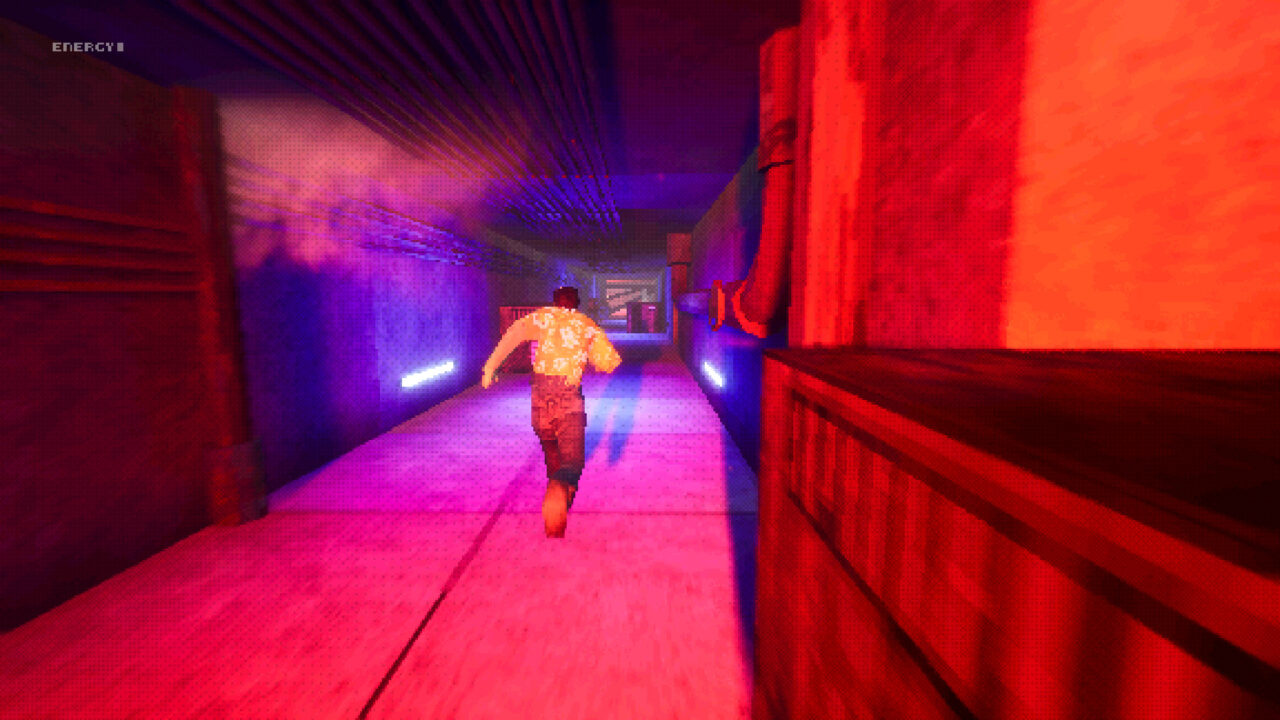
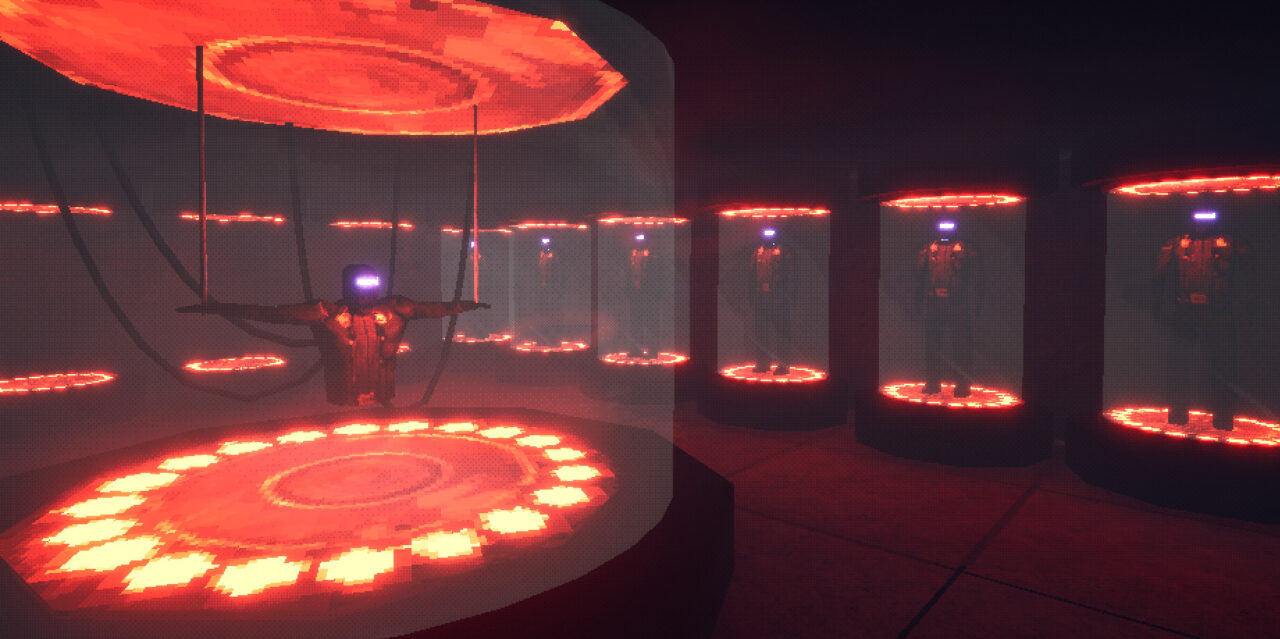
I loved to hear that. I told Antonio that frankly, I was terrible at stealth games. I play Metal Gear Solid because even when you mess up you can just shoot your way out then try to be sneaky in the next area. So it was very nice to hear he was making considerations for less-than-sneaky people like me.
AF: That’s because I’m not the best at stealth games either. I like that gameplay, but I can understand why a lot of people don’t like it. And yeah, my favorites are also Metal Gear, because of the same reasons as you said. Another thing about stealth games that never made sense to me is that you’re sneaking and you get caught, which means you failed, and then the game gets harder, which makes no sense. Like, if you’re losing it should get easier, not harder, right? All other games, like action games, if you die, they get easier. so this didn’t make a lot of sense. And so yeah, I’m trying something new in this new game, which comes out later this year. I hope it will appeal to a broader audience. Like I’m calling it not just stealth, not just stealth action, but like a sort of, you know, deconstruction of it. It’s a little different. Another thing that really hit me is like the sort of Predator-like hunter’s stealth, where you’re sort of picking off enemies one by one. That’s also really fun, like, you’re really powerful as long as you’re hidden. And so I’m trying to lean in on that also.
That definitely sounded like something up my alley; I commented that it seemed like most stealth games underpower the player to incentivize them to find the sneakiest route through the area. And that the idea of being put into a powerful role with stealth being an option as opposed to the standard was an enticing idea to me.
AF: Yeah, that’s the idea. And instead of punishing you for being caught, I will be rewarding you for not being caught, you know what I mean? Like the normal will be being caught, if that makes sense. Like, the alert mode, instead of that being a punishment that will be like, the norm. If you manage to stay hidden, that’s even better, you get more power to get more stuff.
Before we dove into the meat and bones of his latest title No Sun To Worship, I wanted to learn more about his work process when it came to creating these games. I asked Antonio if he started out these games from a mechanical point, or did it start from an artistic point and grow from there?
AF: I start with the artistic direction. Usually I have a concept , a character, a mood but yeah, it’s more on that, not really on the mechanical side. I’m not thinking like “oh, what if I make a game where the character can jump into this and that and like time stops moving when you don’t move? That kind of stuff is not my type. Like for me, it’s more like “Okay, what if I make a game about climate change? That’s depressing and, and that, and it’s really gray and whatever” which is No Sun To Worship and from there I start extrapolating. Like, who’s the main character of such a story. And once I have that concept, very broad, not the actual story or anything, but the concept, I go in the engine. The first thing I always do is make the main character, because to me, since you’re looking at this guy, or this lady or whatever for the whole game, it has to be likable, it has to move nice, it has to feel nice to look at. And so that’s the first thing I do, make the model for the main character, put them in the engine and start making the main, obvious things that you have to have, which is moving, basically, walking around. And from there, I start building.
And at the same time, let’s say I’m working on the game for a few hours in the morning, in the afternoon, I’ll write new ideas. So from what I made, now I started like actually brainstorming a little design document that I’m saying, “okay, so this guy, and this is in this world, so he will have to shoot, he will have to hide, he will have to become invisible or whatever.” So that’s the process like, first the concept, then the main character, and then the concept and the main characters are like, feeding into each other. And as I come up with more of the story, I come up with abilities or gameplay mechanics, I come up with more of the story or then I come up with the enemies or the levels, it sort of starts snowballing from there. I do like to write a lot of this down, even if I’m never going to use it, or show it to anyone, I write it down. Because sometimes I’ll forget my ideas, whatever I come up with, the next day, I’m like, “Okay, I came up with this, but let’s cut it and whatever.” And usually what I end up with is like a big list of ideas and like, a game design document that’s for a much bigger game.
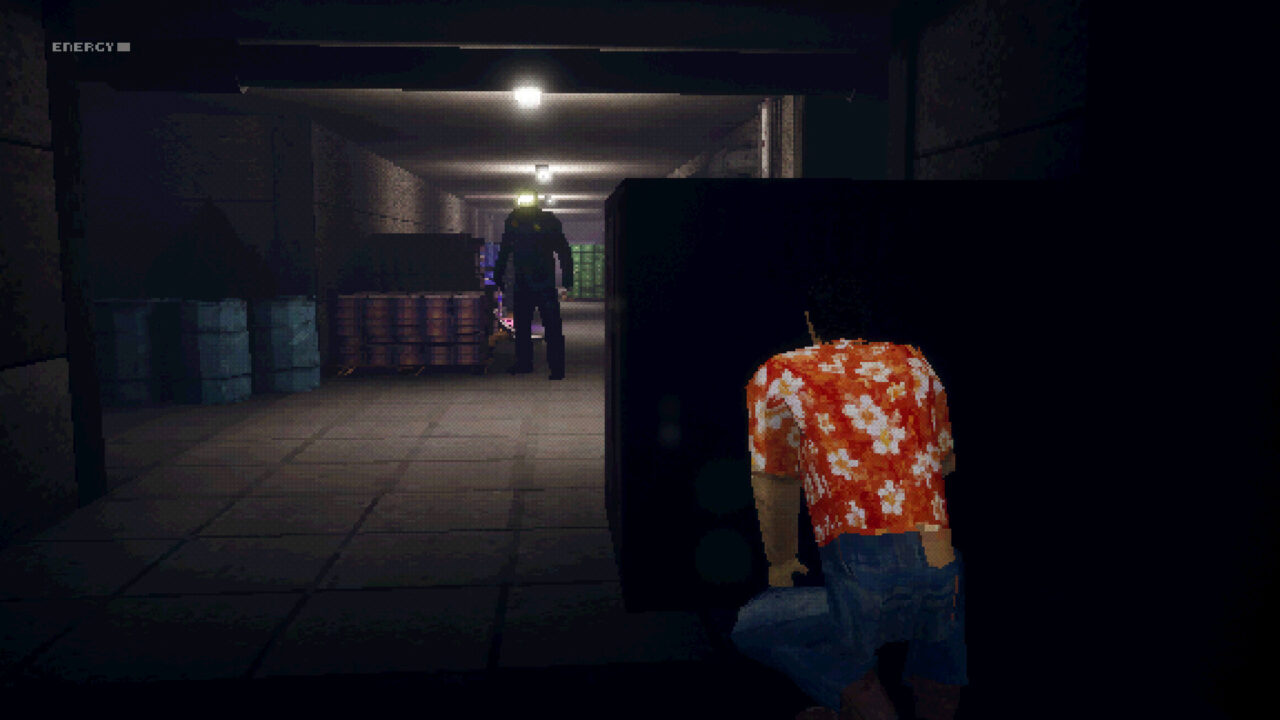
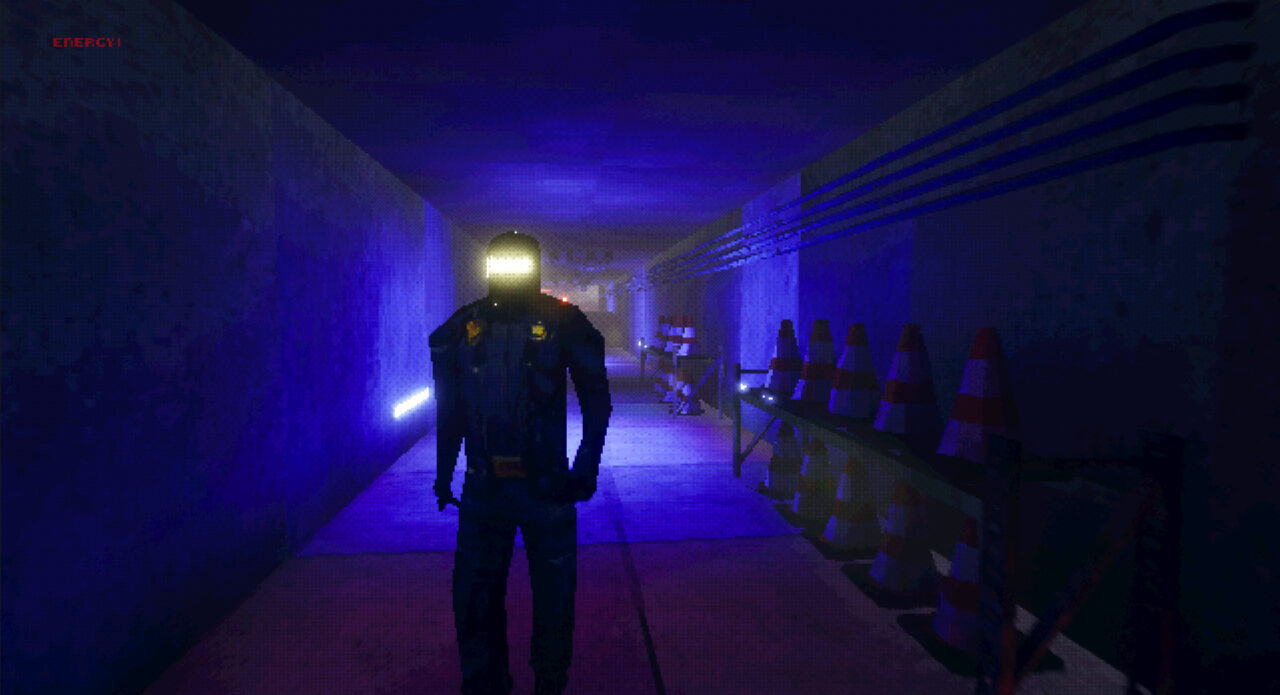
Then what I started doing from there is coding, I start removing features, because that’s something that as I make more games, it has become more of like a signature, or at least something that’s in my mind all the time is like I want something minimalist, I gotta remove as many features as I can. As long as the game is still good, right? And it’s still what it has to be, right? So No Sun To Worship has a lot more features than my previous game because it needs them to achieve that idea of stealth where you’re not stressed about failing. For example, I only have two weapons in the game. At first, I planned a bunch. But then I kept saying, like, “You know, a shotgun is just a stronger pistol or a slower machine gun or whatever. You know, an AK and SMG, they’re kind of the same,” like in terms of gameplay they are kind of the same, one shoots faster, one stronger, whatever, it’s the same. And so I started coding now and I ended up with a silenced pistol and a loud rifle. Or, I had had a bunch of ideas like, you go on the zipline, and then you go on the pipe, and then you go on the ladder. But I started cutting some of them partly because, you know, being a solo developer, you can’t do everything, but also, partly because that’s the type of game I want to make. That’s how I play games also, like, I usually forget about, you know, upgrading your weapon or like going into the skill tree and unlocking more abilities. That’s just how I play them. And so I thought, “Okay, that will be part of my signature. My games are minimalist, but not bare,” you know what I mean?
It sounded like Antonio had developed the perfect method to combat feature creep, focusing on strengthening the creative aspects while leaving only enough mechanical features to convey the vision he had in mind. I commented that this seemed like a much healthier way to work on games, as opposed to trying to include everything you can think of to please as many people as possible.
AF: Yeah, for example, The Chameleon took me nine months, Undetected took me ten and at some point I decided like, yeah, it’s not that long, but it’s still too long for me personally, because of the same reasons you said, I get stressed. And then every hour or every day extra that you work is a day extra you have to make the money back, right? So let’s say that it took me a week more than I thought, that’s a lot of sales to cover that. And so I thought, “Okay, I’ll make smaller games. And they might not sell as much as the bigger games because there’s only a certain type of people that like smaller games, well, that’s fine, because I don’t need to sell more. I just need to sell a certain amount, right?”
So for example, my previous game, It Comes In Waves, took me two months to make. It’s a small game, it’s minimalist, but people liked it. And I sold enough to cover the two months of salary plus plus a little bit more. So that already makes it a success. If I showed the numbers to someone, they might be like, “that’s nothing, you only sold that [little]” but what if I told them “Yeah, but it took me two months to make, and I didn’t spend money on, you know, voice acting or whatever,” then it makes sense, then it’s like, making that allows me to make another one, because I covered my costs, and so it’s on the business side. Also it makes sense for me, on the mental health side, like you said, it also makes sense for me, because I don’t have to be as stressed about making it, but also as stressed about it selling.
And another problem that I have is, well, a lot of developers have, the problem is you start making it and you’re super excited. But once you’re in like six months or eight months, and you’re like, “Ugh, I just want to finish,” like, I have these other ideas that I want to make. And so this also solves it because I never run out of motivation because I finish the game before I run out of motivation. And so I feel like that also translates into the experience. The players play, everything they see in the game was made by me at the top of my motivation and like super excited to make it. Like, I love longer games, to play them, but I don’t think I could make them. I admire people who make them but I couldn’t personally.

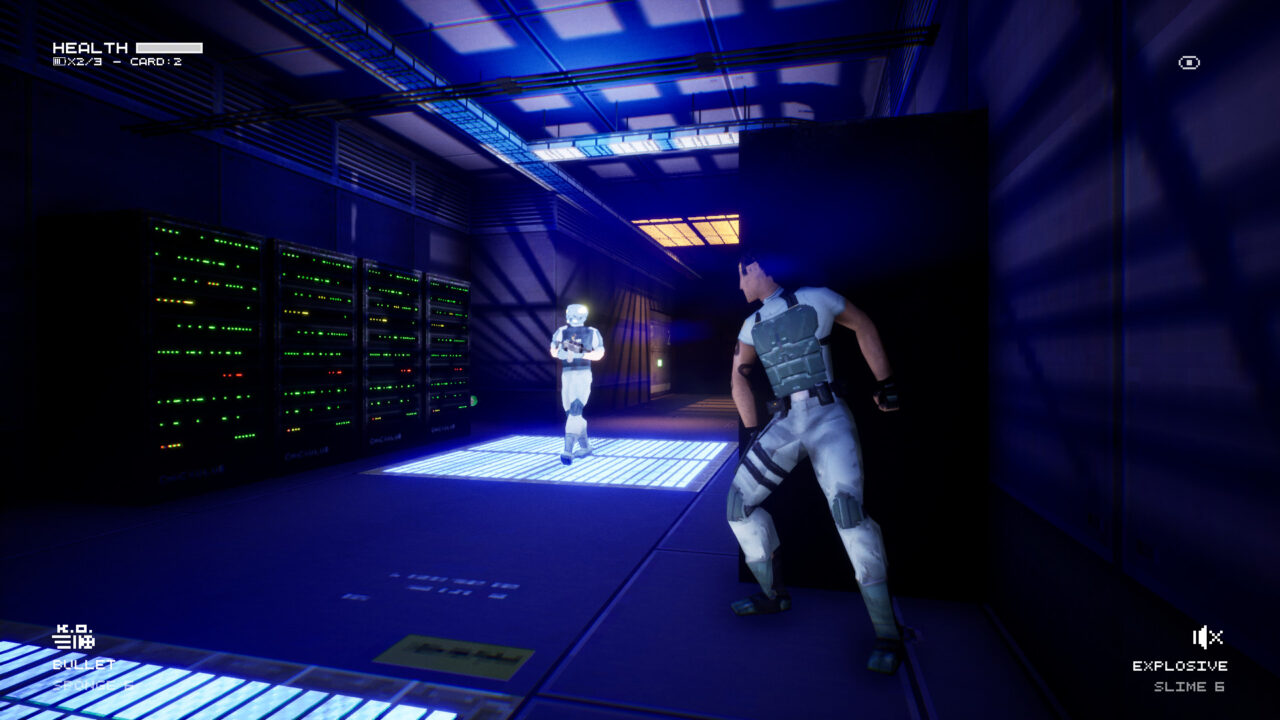
This whole philosophy reminded me of a story I rather liked, and I asked Antonio if he was familiar with The Businessman and the Fisherman, which basically amounted to “If I make enough to get by comfortably and don’t focus on getting rich, I will be happier”
AF: Exactly. Yeah. The other thing for example, because some people say, “Ah, you could make a small prototype and find funding and hire a couple more people and make a bigger game.” But that includes, you know, managing people and being stressed about budget and about deadlines. And I admire the people who can do it but that’s not just not for me. Instead I want to make these small games but make them very impactful. Make sure that people who play it they’re like “This took me an hour to finish but it was like, the best hour of this week, my biggest memory is playing this small game.” That’s great, that’s my goal.
I could absolutely see that being the case, commenting that I had played more impactful indie games than triple-A titles. Speaking more on the topic of his workflow, I asked if these games were a 100% solo endeavor, or were there some minor aspects that were made with outside help?
AF: Depending on the game, it varies. For most of them I did outsource the marketing art. Like banners and the poster, or stuff for Steam. I have a good artist Dakota Lee and he has helped me with that. For The Chameleon and Undetected, I outsourced just a few of the 3D models just to help me. There was so much work, Undetected has this big jungle area. And so I had a friend Sadie, she helped me make plants and trees and stuff like that. That one was also like, I needed help just because it’s so much work. And that’s also part of why I decided to make the game smaller. For this new game, I did commission the 3D models from a friend, Linus, because I felt like this game really had to nail the character models, he’s super talented. And since Dakota had made some designs for the characters in this game that looked super, super cool. I was like, “Okay, I’m gonna get like, proper, high level artists to make them.” And the other thing that I do, it’s not commissioned, but like, I just download, is sounds. I feel like a lot of sounds that are real, you know, footsteps, gunshots, that kind of stuff is fine. I just get it because it’s a real sound. I’ll just buy a sound, and I myself make like, just the sounds that are fake. So the robot and the menu and stuff like that, yeah.
I doubted that any sane gamer would be listening intently enough to really notice, let alone disparage a dev for using canned footsteps. It made sense to put that effort into the noises that would elevate the immersion for the player, or help sell the world of the game.
AF: Yeah, exactly. And unless it affects the personality of the game, like, the game is very cartoony, and it’s a very specific sound, otherwise, it doesn’t matter. And also, because I’m a solo dev, I have to find a shortcut, as many as I can, in every part of it. I do like having all the art be custom, because I think, you know, it has to be cohesive and it’s hard to get different assets and try to make them fit together. It’s better for me to just make them from scratch or you know, pay a friend that can make something that I can also match with my style so that it doesn’t stick out. That’s the other thing that I’ve been moving towards, In The Chameleon I had people help me make models, and Undetected a little less, in Shotgun Arm and Waves I made everything myself. And for this one I had Linus help me with the player models, but that was it and I think going forward, I’m gonna stick to just making them myself. It’s part of what I was saying before. As soon as you involve paying someone else, It adds pressure. You know now I have to sell not only to cover me but to cover the freelancer stuff that I paid for. It also adds pressure that anything that I make for the game has to fit the quality that he made. And while I can do it, it might take longer than usual, that kind of stuff. So for this game, since it’s more like a passion project, well, they all are, but this one especially. It’s like, my top stealth game that I want to make. I did get Linus to help, but in the future, I’m just gonna stick to making everything myself, especially because with It Comes In Waves, it worked very well. I made everything and people liked how I made things, and liked my vision, and so I think I can do that moving forward.
Speaking so much about the titles he had worked on, and the processes behind their development, one thing that I was curious about was the rate at which these titles were released. Merlino Games had put out four games in a little less than two years. While none of these games are of such a massive scale that this would be herculean, it did seem to require a certain dedication to the development cycle. With this in mind, I bluntly asked Antonio if he ever stopped working on games, or was he diving into the next project the moment the first was finished?
AF: So I usually immediately start again, maybe I’ll take a week off or something. But I think what has helped me keep this pace is I don’t work on the weekends, I don’t work after hours, like I work as if it’s a nine to five job. So during that time, I do my best. And I focus and pump out the games. But if it’s like, five or six pm, it’s time to leave work. I work at home, but I pretend I’m leaving the office, that’s it, I closed that room, I don’t go in that room. Same on the weekend, on the weekend, I can come up with ideas, write stories but I don’t go and sit and work on the engine. And so I think that has helped me, both not needing to take a long break, like weeks or months, and also not burnout. Because I still have free time, I still have time to relax, to read and to play games. And so it’s like, I’m being my own boss, right? So during work hours, I’m tougher on myself. And I’m like, “you gotta work the nine to five,” like, “don’t mess around on YouTube or whatever.” But then at five or six, you’re out. And that’s it. You know, and I think that helps. Because I think you need to be at a good pace mentally, to make these games because it’s a lot of work. And so you have to be healthy in that way too. And so that’s, I think, how I personally achieve it, or how it works for me. Treating it like a real job so that I am not burning myself out working out like 11pm or whatever.
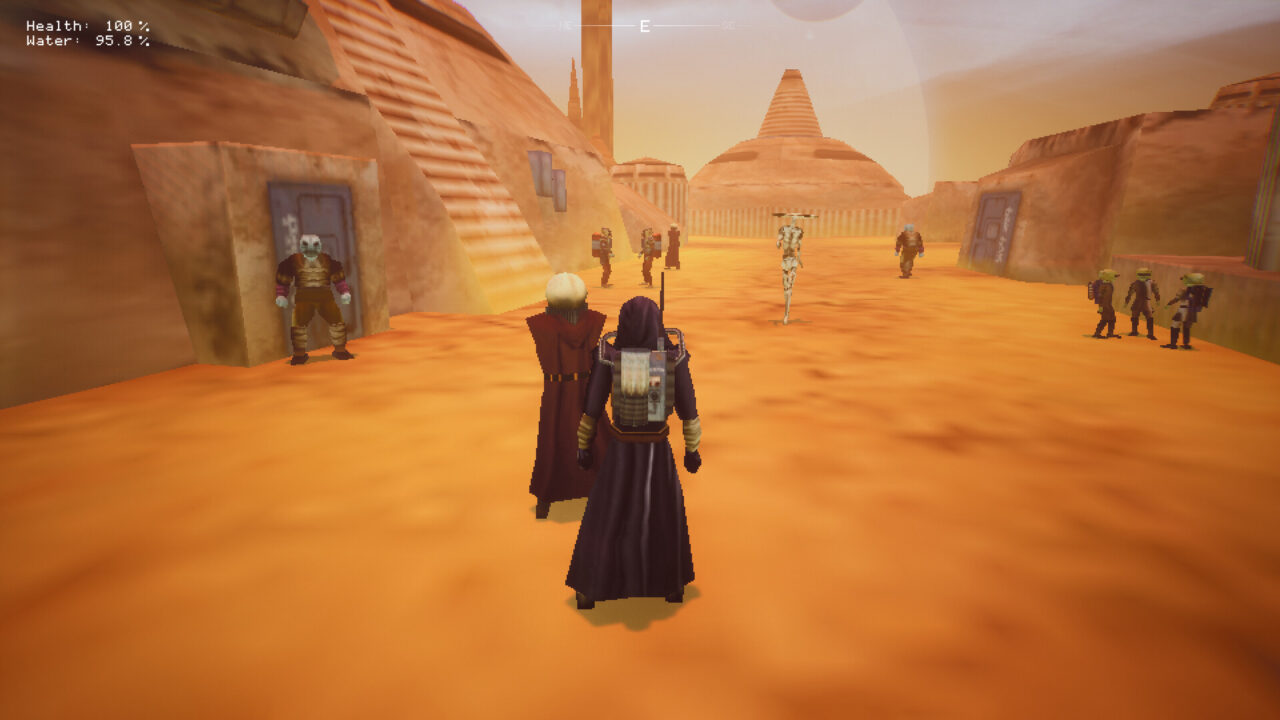
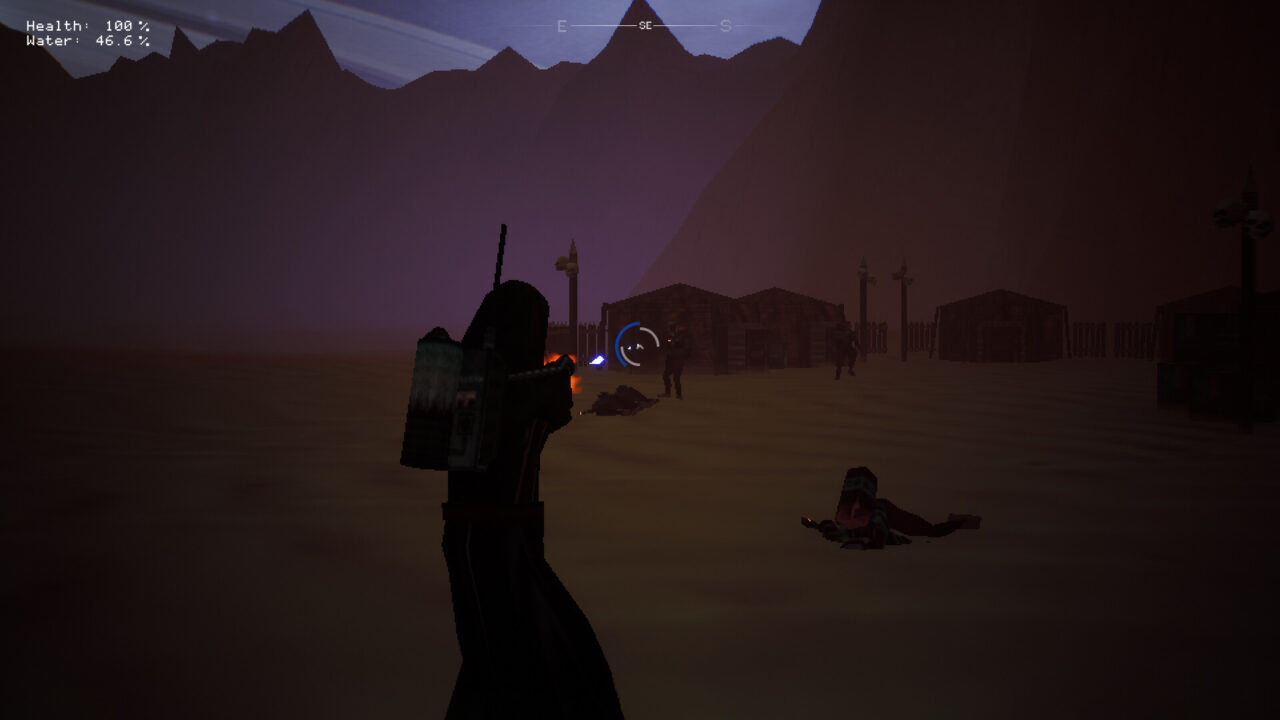
I commented again that it sounded like a very healthy way to handle the dev cycle, there are certainly some people who have that “grind never stops” mentality
AF: Yeah, it’s hard not to because you get into it and you’re excited. You’re like “I want to finish this feature before I go to bed.” But in the long term it is not good. Because maybe you do it like that for a week or two. And then the third week you’re destroyed.
Speaking more on the subject, I spoke about the parallels between recording music, where you can stay up all night trying to get the perfect take on a riff but odds are you’ll nail it in three takes tomorrow if you just go to bed and get some rest. Acknowledging the need for a separation of social and work life sounded like a good way to ensure he’d never grow to resent the dev cycle.
AF: Yeah, there’s another thing I don’t know if they have that term in English. In Spanish, they say like workshop blindness, which means you’ve been working on this thing for so many hours or so many days, that you stop seeing the mistakes or the good sides. Like, you can’t tell if it’s good or bad anymore, you’re just making it, and so you need that separation. Like, I’ll stop, I’ll go to sleep, I’ll come back tomorrow and see if it’s still as good as I thought or if it’s actually terrible. You need that separation also, not just for mental health, but just for being able to make it the best it can be. Like the guitar takes you, you mentioned, because I also make music, and yeah, that’s so real. If you’re playing the same riff 100 times, you’re just like, “I just want to get over with,” but if you wait, come back the next day, you might do a much better job.
Before moving on to his upcoming title, No Sun To Worship, I had one question about the perception of his titles, personally and publicly. I asked Antonio, of his games, which did he feel like was the fan favorite, and what was his favorite?
AF: So my favorite is It Comes In Waves. I mean, so far. Both because it’s very personal. But also because it helped me decide who I want to be as a game developer, as an artist, like what I want to make, what kind of games, what kind of messages. It really changed me making that one. And so that’s mine. With fans? I don’t know. On my Discord, they I think Undetected, maybe, or The Chameleon even. Yeah, one of those two because It Comes In Waves has way more sales and better reviews and everything. But I think the people who like Undetected, like, really like it, like, you know, they talk about the characters and all that a lot more. And so I think it’s that one. We’ll see, I don’t know, I think the new one will be the fan favorite.
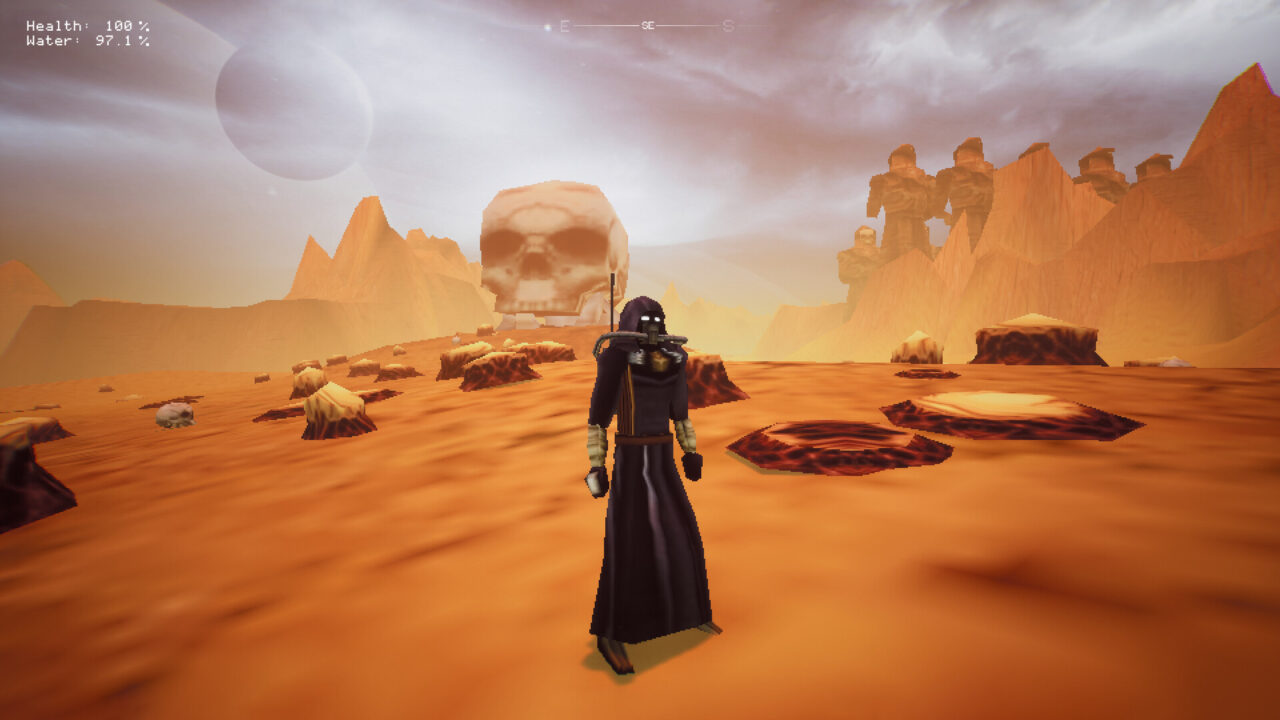

From what I had seen of the game, that was easy to believe, as it appeared to be shaping up into a fantastic title. I asked if he could tell us about No Sun To Worship, in terms of the story and gameplay?
AF: Yeah, so So in terms of gameplay? So one thing I’ve learned is I don’t want to compare it to any specific game. Because when I did that with Undetected, it didn’t go well. But I would say yeah, it’s kind of if you took Splinter Cell, like the earlier games, mix them with Peace Walker, for Metal Gear, and also my own take on it. But yeah, it’s a stealth action game. It’s a lot about taking out the guards little by little from the dark. A lot of stealth games go from point A to point B, this one’s more about clearing out certain areas. And what I’m trying to do is make it very open, where you can clear them out in many ways. You can shoot your way out, you can hide, you can stealth, kill them and play with the environment, make noises, whatever. You’re very varied, you can shoot out lights and all that.
And in terms of story, I don’t want to spoil it too much. But basically, let me tell you how it starts. It says we’ve painted the sky ashen gray and burned the heavens to starve each other. So this is sort of like in The Matrix where they like, poison the sky to kill the machines. In this case, there was a war and the planet is fucked in terms of you know, the environment. And the main character here is, I’m having a hard time describing it without spoiling anything but yeah, it’s basically a post-apocalyptic world, and this main character is trying to do something to solve it. What I would say is it’s not heroic, it’s not like this is a guy who’s a hero who’s going to save the world from a World War. This is more of a world that you can’t save.
You’ll see, I don’t really want to spoil it but it’s pretty dark. Again, It’s personal, like, It Comes In Waves. It’s not very obvious in the sense that it’s not spelled out like ‘this is the story this is what happens’ it’s a little bit more symbolic. And yeah, it has a big emphasis on the gameplay. It’s light on cutscenes and on story there’s a lot of lore that you can find like, you know, typical thing where you find a computer where you can read people’s emails and learn more about the world. But it’s light on the story, it’s more about meaning.
I was excited for the opportunity to be the hunter as opposed to the prey, and to use stealth as a tool for violence as opposed to being a way to avoid confrontation.
AF: Yeah, exactly, like you get to an area and there’s 20 of these guys. And so it’s like, I need stealth to take them out, or at least stealth to take out 15, and the last five I can just fight directly, that kind of thing. Like it’s more of a ‘you against the world’ thing. And so you need stealth just because of that. At some point you might feel more confident in saying “Okay, I’ve killed enough dudes, I can come out and make a mess or be loud.” And that’s why I was mentioning that balance where you can sneak for a while but I’m not forcing you to sneak forever you can go out and shoot everyone if you want.
From what I had seen and heard, it sounded like No Sun To Worship was really coming into shape at this time. Curious as to what the timeline for the project was, I asked Antonio how long had he been working on the title?
AF: So yeah, so I worked four months last year on it. Then I made Shotgun Arm and Waves and now I’ve been working another month, so five total. Right now I finished all the features, AI, everything, all the gameplay. And so I think it’ll take me another maybe five or six months to make all the levels and the story and the menus and whatever. So I think it should be out by the end of the year.
Jokingly I asked if he promised there wouldn’t be another name change. As No Sun To Worship was a very cool title, but it had originally bore a different name.
AF: Oh yeah, completely. This is the name. It used to be, you know, the sequel to Undetected but the story and the world of Undetected seemed very limiting, like trying to make a sequel while also trying to convey this other message that I had that is unrelated to that story. So I thought like, I’ll just separate and make it its own game and like, make its own its own thing.
I added that the previous name, Endless Cemetery, was also very metal and cool.
AF: So, Endless Cemetery is a song by a band that I like. So at some point, I thought maybe it’s not the best idea, even if it’s legal, it is not the best idea to just use someone else’s name, you know, from their song. I love it and it is part of the story because it’s like, basically you’re just killing all these dudes and they’re killing each other and the world is fucked and like there’s a lot of murder and so that’s why it was like a sort of endless cemetery. But then I felt like “Okay, I’ll just use the name that is mine instead” again not for legal reasons, because song titles you can just use, it’s fine, it’s just words. But because it didn’t feel personal enough, like I felt like if I’m making a personal game then it should have a name that I came up with and that line No Sun To Worship is from a song by one of my bands back in the day.
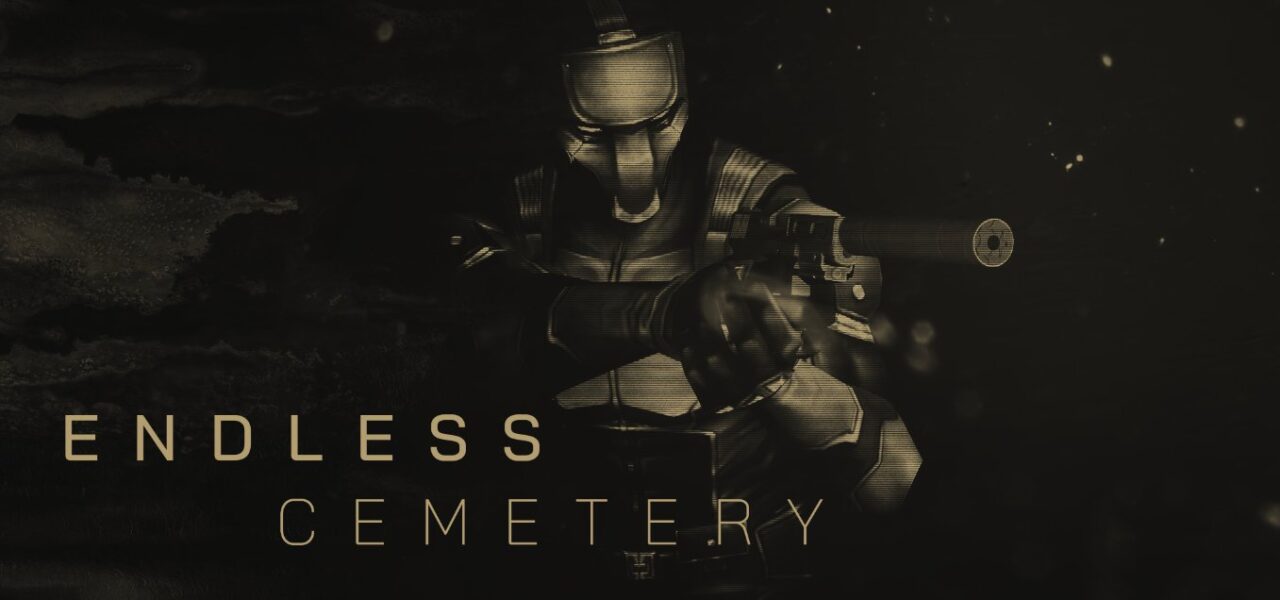
I had found Endless Cemetery by Crytopsy but I asked Antonio for the name of his band as well.
AF: Yeah, that’s that’s the band that I like and then I took the name from, but then I was like, not the best idea. My band is called Serocs, and one of the songs says something about No Sun To Worship. If people want to spoil a little bit, this game is a little bit inspired by that album and so it’s like, I’m taking whatever I was trying to convey in that album and now I’m trying to turn it into a game
Having listened to Serocs, I can confirm that it is ripper grindcore, and told Antonio as such. If you are into that sort of thing you should check it out. Wrapping up the interview, I again thanked Antonio for taking the time to speak with me about his process and upcoming project. I took a moment to tell him again that I really liked the way he approached designing the game, from conception to production, and that again, it just sounded really healthy.
AF: Thank you, I would say part of the success I’ve had is the game. But I think part of the success is also with game developers when I talk about those things, because they find it like, “oh, that sounds like a good way to do it.” And that just comes from my own career before games, and all the jobs that I’ve had where it was always like, you know, “I’m not gonna answer emails on the weekend, I’m not gonna answer my boss on the weekend” I’ll make him know that after six, and I leave the office, that’s it. At the same time, I’ll be super efficient while I’m there, so that no one minds that I am not responsive when I’m gone. And so I think just from that grind, once I started, and also from making music because it was the same reasoning, like, you know, you should know, you can’t play this type of music all the time or at night, it’s too much. Like, you can’t have your amp so loud for so many hours. And so all of that feeds into this. So I always try to share that message and be like, “No, no, it’ll be better for you if you just rest or take some time off. Watch a movie, and the movie will give you ideas for your game,” that kind of stuff, listen to music, etc. And so yeah, if you want to emphasize that part, that’s always something I want to like, share with everyone.
With that we ended the call and Antonio returned to fine-tuning bump physics among other things as he prepares No Sun To Worship for release later this year.
While there is no Steam page up for No Sun To Worship at this time, feel free to browse his other titles, which are priced ridiculously low. And in the interim you can follow Antonio on Twitter to see updates on the title and hear his thoughts on stealth gaming among other things. And as always, dear reader, if you are absolutely fiending for more gruesome gossip on the latest and greatest in gory, ghoulish gaming, then head back to DreadXP and read more of our Frightful Features!
Categorized:Interviews
